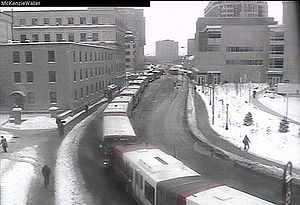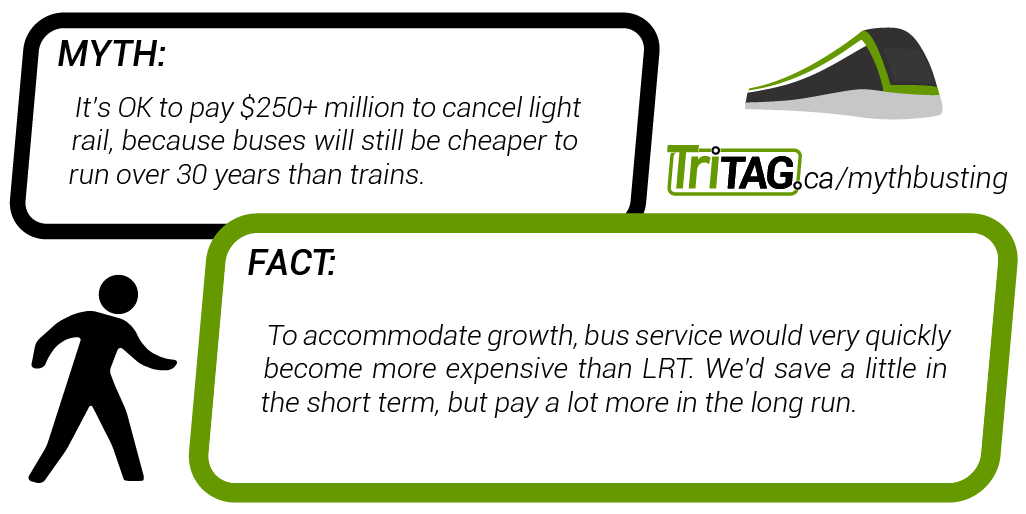Yesterday, we showed how ION construction will be cheaper to finish than to cancel. Today, we’ll talk about operating costs.
ION will cost, annually:
- $19 million to operate, maintain, and refurbish
- $11 million for financing
… for a total of $30 million per year.
ION is expected to serve 25,000 passengers a day in 2017 at that cost. We estimate it would cost $23.6 million per year1 to serve this by bus.
This looks like a decent saving for buses only. But ridership is growing, and as it does, we keep having to add more and more buses to keep up. To handle 56,000 riders in 2031, bus service costs skyrocket to $52.9 million a year2.
With vehicles that can carry up to 250 passengers, ION will bring significant room for growth. To meet demand in 2031, ION service hours go up less than 10%3, although peak time runs will have two trains coupled together. But even if operating costs go up by 25%, ION comes out $18 million cheaper per year.
And beyond 2031, as ridership continues to grow, the savings get even larger.
An  additional point to consider: as we add more and more buses to the central corridor, performance (and traffic!) will get worse and worse. We already see significant bus bunching and delays from loading and unloading, and schedule times are getting worse. These problems will be magnified in the future.
additional point to consider: as we add more and more buses to the central corridor, performance (and traffic!) will get worse and worse. We already see significant bus bunching and delays from loading and unloading, and schedule times are getting worse. These problems will be magnified in the future.
The consequence is that we’ll never see the kind of ridership out of a bus system as we will from light rail, as people simply decide to drive. And that creates a new problem, one that rapid transit is meant to help us avoid: the cost of many thousands of additional people driving in Waterloo Region.
Read Myth 3 to find out how scrimping on transit will hit our taxes in other ways.
- Mythbusting the election: Candidates said it, but can they back it up?
- TriTAG Election Candidate Survey: Find out where candidates stand on ION and transit!
- ION’s route, animated: Think it’s just a mall to mall train? Think again.
- ION Infographic: Find out the facts about ION, and how it will benefit you.
Footnotes:
1 - GRT Cost per service hour (source) applied to estimated service hours for route 7 and 200 iXpress (KW only), scaled from current 20,000 riders/day to 25,000 for 2017. For more information, please see our methodology post. 2 - See 1, scaled from 20,000 to 56,000 riders/day for 2031 3 - Project agreement base service plans: 2017 service hours (BSP1): 55,014. 2031 service hours (BSP4): 59,993.


You guys got a mention on streetsblog http://streetsblog.net/2014/10/21/the-surprisingly-rare-sanctuary-from-urban-freeway-noise/